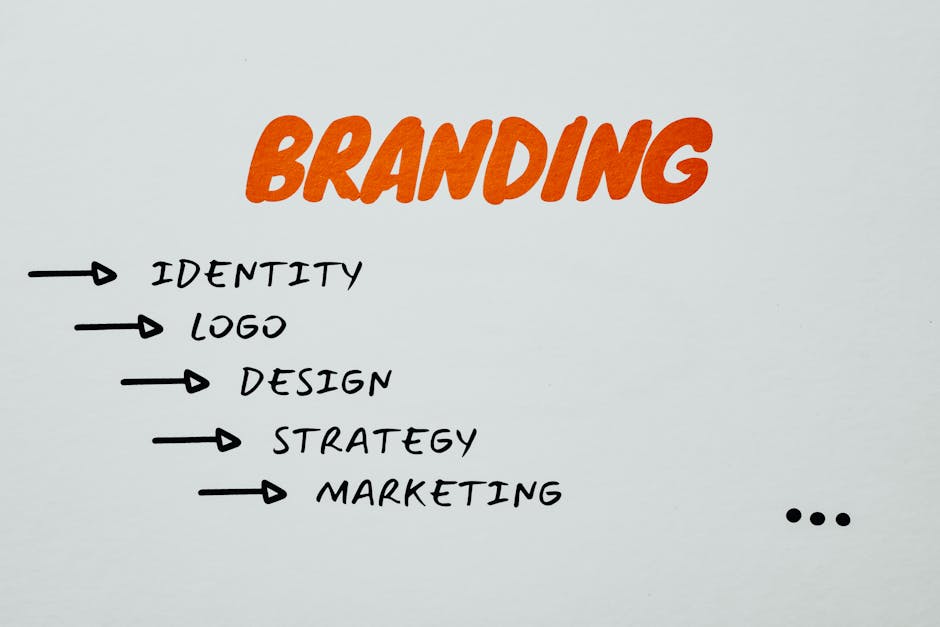Content style guide is more than just a set of rules—it’s the foundation for every word, image, and message your brand shares. At Style QA, we believe that being styled with purpose and answered with insight begins with a comprehensive, evergreen content style guide that empowers your team to communicate clearly, consistently, and authentically.
What Is a Content Style Guide and Why Does It Matter?

Photo by One Vision on Pexels
In today’s fast-moving digital landscape, a content style guide is your brand’s north star. It’s a living document that defines how your organization communicates—verbally and visually—across all platforms. This guide covers everything from grammar and tone to logo placement and color usage, ensuring that every piece of content aligns with your brand identity.
Why does this matter? Consistency is the key to building trust and recognition. When your audience sees the same voice, tone, and visual identity across your website, social media, emails, and print materials, they start to recognize and trust your brand. A style guide ensures that no matter who creates the content—whether it’s a marketer, designer, or customer support agent—your brand always speaks with one voice.
Moreover, a content style guide streamlines onboarding for new team members, reduces errors, and saves time by eliminating guesswork. It empowers your team to create confidently, knowing they’re always on-brand and on-message.
Core Components of an Effective Content Style Guide

A well-crafted content style guide is thorough, actionable, and tailored to your unique brand. Here are the essential elements every guide should include:
- Brand Voice and Tone: Define your brand’s personality. Are you formal or casual? Playful or authoritative? Include examples for different scenarios, such as social media posts versus official press releases.
- Writing Conventions: Establish rules for grammar, punctuation, spelling, and capitalization. Specify preferences for things like Oxford commas, headline case, and abbreviations.
- Visual Guidelines: Detail logo usage, color palettes, typography, and imagery. Include do’s and don’ts for each element to prevent common mistakes.
- SEO and Accessibility: Outline best practices for keyword integration, meta descriptions, alt text for images, and other SEO essentials. Ensure your content is accessible to all users, including those with disabilities.
- Inclusive Language: Promote diversity and respect by specifying guidelines for gender-neutral language, cultural sensitivity, and avoiding stereotypes.
- Platform-Specific Adaptations: Adapt your guidelines for different channels, such as social media, blogs, newsletters, and customer support.
By covering these core areas, your content style guide becomes a comprehensive resource that supports every aspect of your brand communication.
Developing Your Brand Voice and Tone

Photo by Photo By: Kaboompics.com on Pexels
Your brand voice is the unique personality that shines through in every message you share. It’s the sum of your brand’s values, mission, and audience expectations, distilled into a distinct style of communication. Developing a consistent voice and tone is crucial for standing out in a crowded marketplace.
Start by defining your brand’s core values and mission. Are you innovative and forward-thinking, or traditional and reliable? Next, identify your target audience and consider what resonates with them. Are they looking for expert advice, friendly conversation, or bold inspiration?
Once you’ve defined your voice, document it with clear descriptions and real-life examples. For instance, if your tone is friendly and conversational, provide sample sentences that demonstrate this style. If you need to adjust your tone for different contexts—such as being more formal in press releases or more playful on social media—outline those variations in your guide.
Remember, a strong brand voice builds emotional connections. It makes your brand memorable and relatable, fostering loyalty and engagement over time.
Establishing Writing and Grammar Standards

Photo by Markus Winkler on Pexels
Clarity and professionalism in writing are non-negotiable for any successful brand. Your content style guide should set clear standards for grammar, punctuation, spelling, and usage. Decide whether you’ll use American or British English, whether to embrace or avoid the Oxford comma, and how to handle numbers, dates, and abbreviations.
Consider referencing established style manuals—such as AP, Chicago, or your industry’s preferred guide—as a foundation, then customize rules to fit your brand’s needs. Include guidelines for headline capitalization, bullet point formatting, and preferred vocabulary.
Don’t forget digital writing conventions. Specify how to format hyperlinks, hashtags, and emojis. Address common issues like passive voice, jargon, and sentence length to promote readability and engagement.
By setting these standards, you ensure every piece of content is polished, professional, and easy to understand—no matter who writes it.
Visual Identity: Logos, Colors, and Imagery

Photo by Jan van der Wolf on Pexels
Visual consistency is just as important as verbal consistency. Your content style guide should provide detailed instructions for logo usage, color palettes, typography, and imagery. Define primary and secondary logo versions, minimum sizes, and clear space requirements. Specify when and how each logo should be used across different platforms.
For colors, list exact hex codes, RGB values, and CMYK equivalents. Give each color a unique name that reflects your brand’s personality. This not only ensures accuracy but also strengthens your brand identity.
Outline approved fonts for headings, body text, and special elements. Provide guidance on font sizes, line spacing, and alignment to maintain readability and visual harmony.
When it comes to imagery, describe your brand’s preferred style—whether it’s bold and vibrant, minimalist and clean, or something else entirely. Include do’s and don’ts for selecting and editing photos, illustrations, and icons. Visual guidelines help every designer, marketer, and content creator stay on the same page, creating a cohesive brand experience.
SEO and Accessibility Best Practices

Photo by AS Photography on Pexels
Optimizing your content for search engines and accessibility is essential for reaching the widest possible audience. Your content style guide should include clear instructions for keyword research, integration, and placement. Specify how to write compelling meta titles and descriptions, and ensure every image includes descriptive alt text.
Accessibility goes hand-in-hand with SEO. Make sure your content is easy to read, with clear headings, short paragraphs, and logical structure. Use accessible color contrasts, legible fonts, and descriptive links. By prioritizing both SEO and accessibility, you make your content discoverable and usable for everyone.
Encourage your team to stay updated on the latest best practices, as search algorithms and accessibility standards evolve over time. Regularly review and update your style guide to reflect these changes and maintain your competitive edge.
Incorporating Inclusive and Diverse Language

Photo by Alesia Kozik on Pexels
Language shapes perception. By using inclusive and diverse language, your brand demonstrates respect for all individuals and communities. Your content style guide should provide clear guidelines for avoiding stereotypes, using gender-neutral pronouns, and respecting cultural differences.
Encourage writers to use person-first language and avoid assumptions about identity, background, or abilities. Provide examples of inclusive alternatives for common phrases. Address sensitive topics with empathy and care, and review your content regularly to ensure it reflects your commitment to diversity and inclusion.
By making inclusivity a core part of your content style guide, you create a welcoming environment for your audience and reinforce your brand’s values.
Adapting Your Style Guide for Different Platforms

Photo by Anna Shvets on Pexels
Every platform has its own conventions, audience expectations, and technical constraints. Your content style guide should include platform-specific adaptations to ensure your messaging is effective everywhere it appears.
For social media, specify character limits, hashtag usage, and preferred image dimensions. For blogs and articles, outline formatting for headings, subheadings, and multimedia elements. For email newsletters, provide guidance on subject lines, preview text, and call-to-action buttons.
Don’t forget customer support channels, where clarity and empathy are paramount. Tailor your tone and language to fit each platform while maintaining your brand’s core identity. By adapting your style guide for different contexts, you maximize your brand’s impact and reach.
Maintaining and Evolving Your Content Style Guide

Photo by Photo By: Kaboompics.com on Pexels
A content style guide is a living document. As your brand grows and the digital landscape evolves, your guide should adapt to new challenges and opportunities. Schedule regular reviews to update guidelines, add new examples, and address emerging trends or technologies.
Encourage feedback from your team and stakeholders to identify areas for improvement. Make your style guide easily accessible—preferably as a digital resource—and provide training to ensure everyone understands and applies the guidelines consistently.
By keeping your content style guide up to date, you ensure your brand remains relevant, authentic, and effective in every communication.
Conclusion: Your Style Guide as a Strategic Asset

Photo by Eva Bronzini on Pexels
Creating a comprehensive content style guide is an investment in your brand’s future. It empowers your team to communicate with clarity, consistency, and confidence. It builds trust with your audience and sets you apart from the competition.
At Style QA, we believe that every brand deserves to be styled with purpose and answered with insight. Start building your content style guide today, and unlock the full potential of your brand’s voice, visuals, and values.
Sources
- https://www.webfx.com/blog/web-design/brand-style-guide-examples/
- https://www.designrush.com/agency/content-marketing/trends/content-style-guide
- https://aiboost.co.uk/how-to-create-a-content-style-guide-the-ultimate-guide-for-2025/
- https://www.creativefrontiers.co/blog/new-approach-to-brand-identity-design-a-2025-guide

